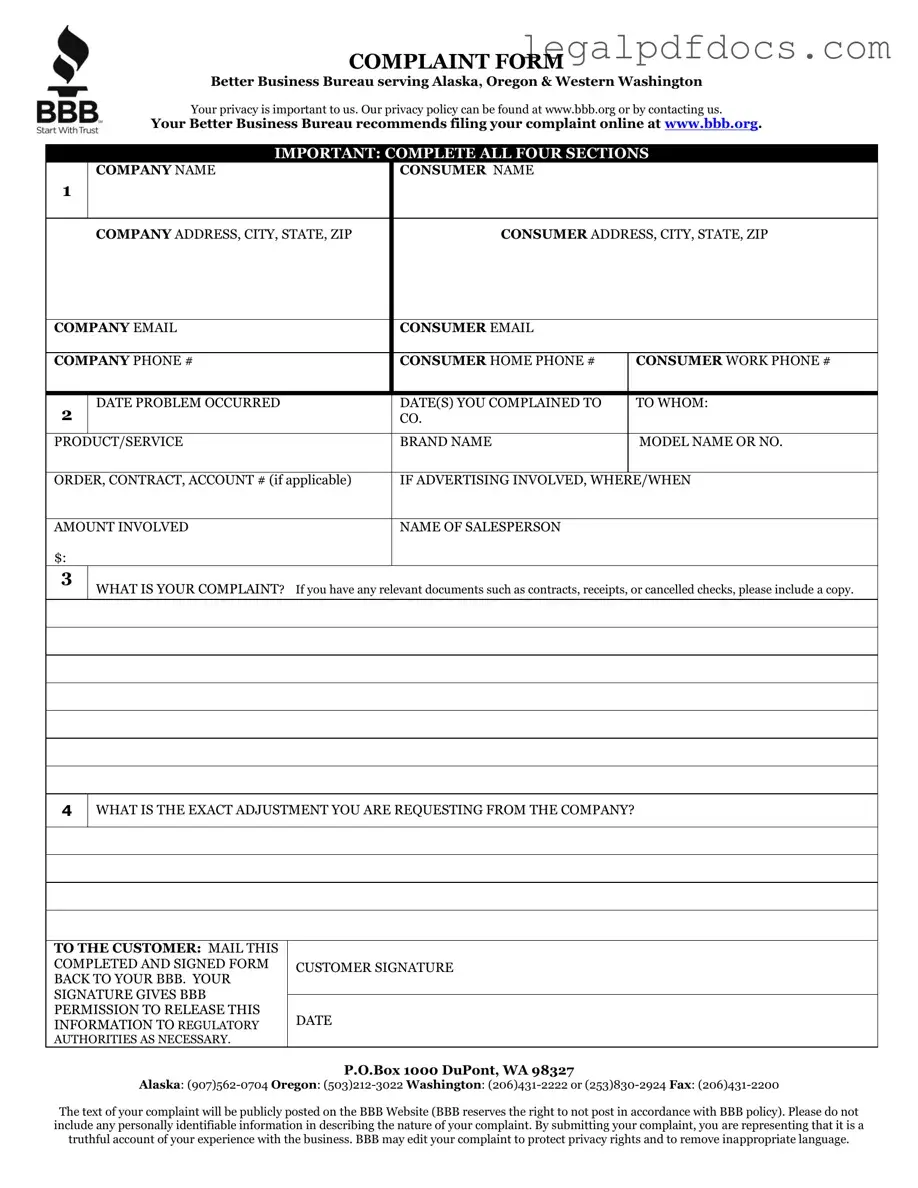The Better Business Bureau (BBB) Complaint Form serves as a vital tool for consumers seeking to address issues with businesses. By utilizing this form, individuals can formally report their grievances, ensuring that their concerns are documented and can be addressed appropriately. The form typically requires essential information such as the consumer's contact details, the name of the business involved, and a detailed description of the complaint. It also allows for the inclusion of supporting documentation, which can strengthen the case. Additionally, the BBB Complaint Form provides options for the consumer to indicate their desired resolution, making it clear what outcome they are seeking. This structured approach not only helps the BBB in processing complaints efficiently but also encourages businesses to respond and resolve issues in a timely manner, fostering better customer relations and accountability.
